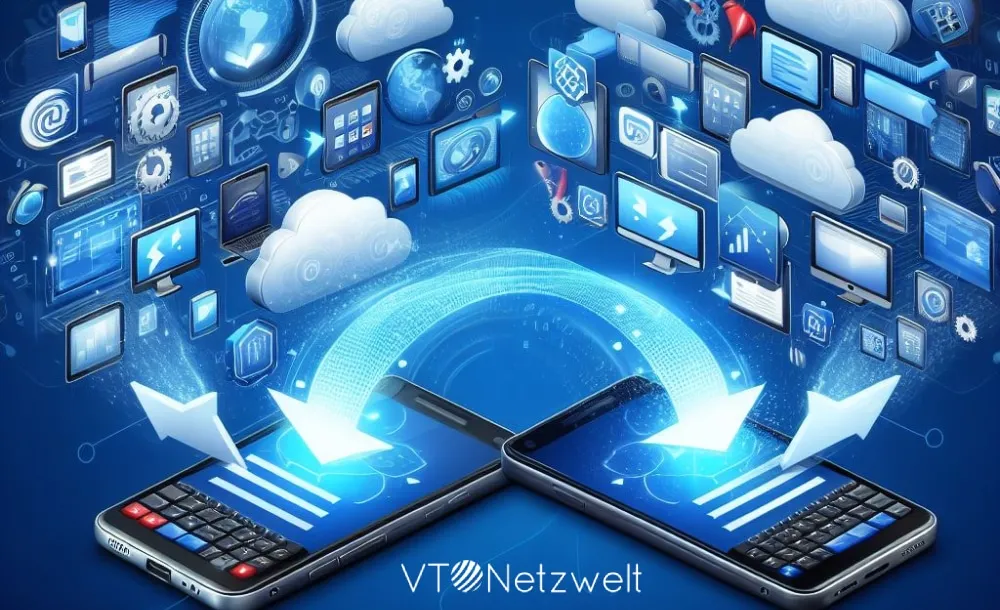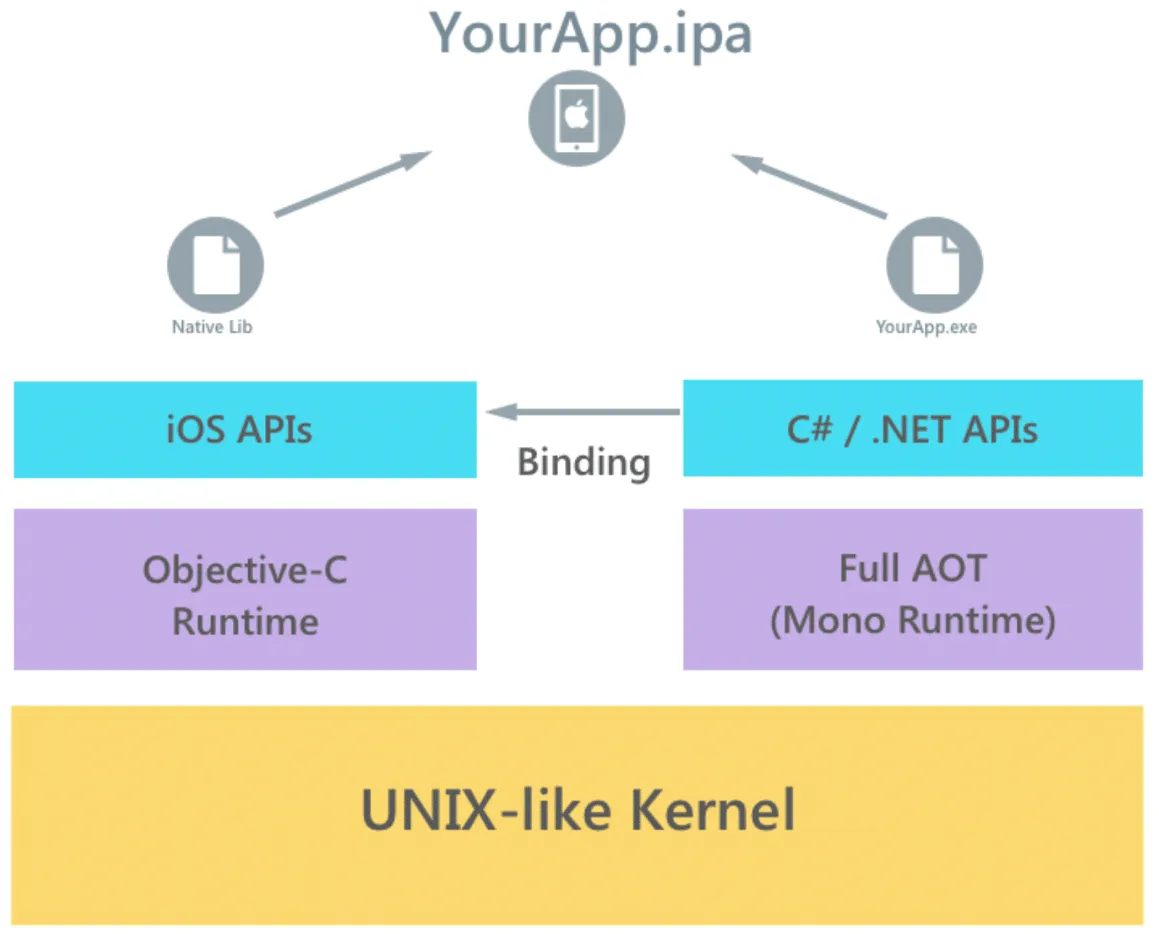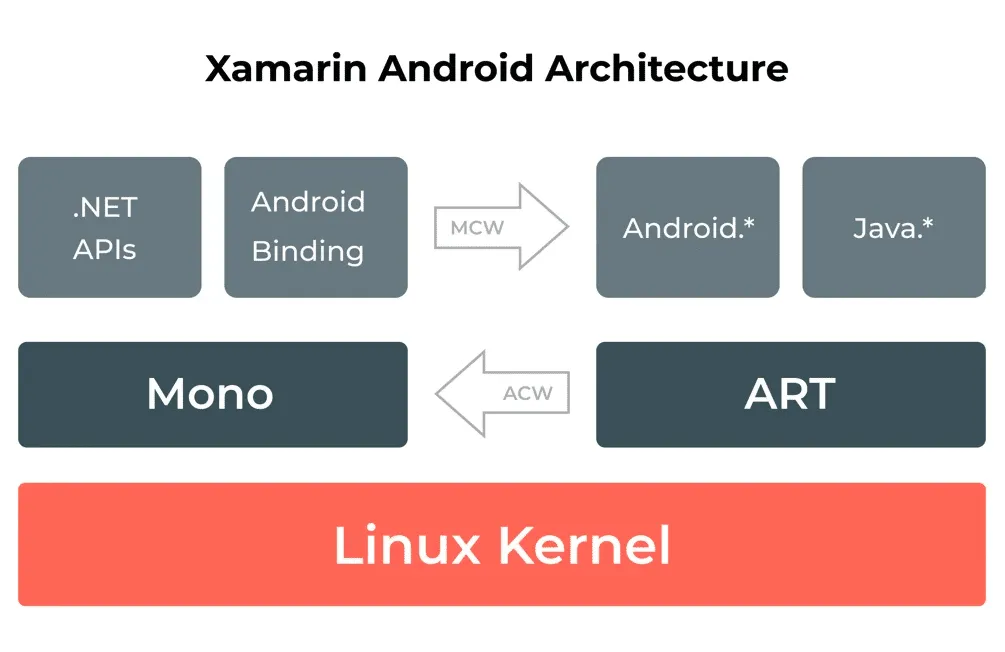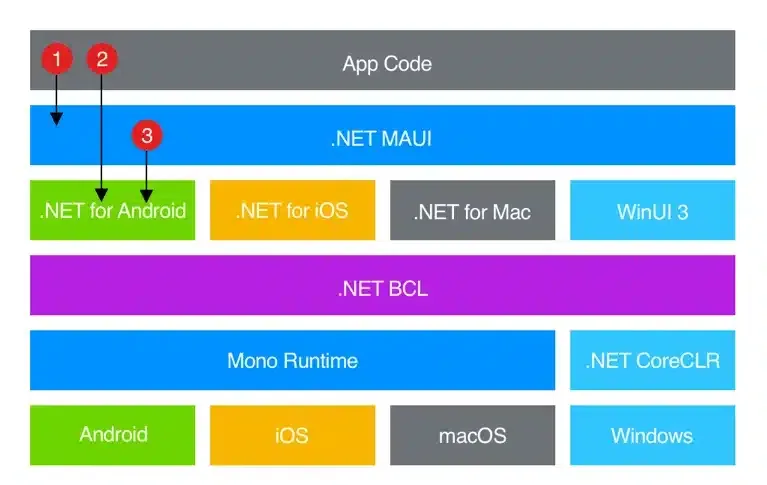



Welcome to our guide on smoothly transitioning your mobile app projects from Xamarin to .NET MAUI! It’s important to note that Microsoft will no longer support Xamarin after May 1, 2024. In this blog post, we will explore the strategies and tips to help you smoothly migrate your projects.
We’ll explain what Xamarin and .NET MAUI are, why the transition is happening, and how you can make the switch seamlessly. Let’s dive into the process together and make your transition from Xamarin to .NET MAUI seamless.
Xamarin is a software platform that enables developers to create mobile applications for multiple operating systems, including iOS and Android, using a single codebase. By using the C# programming language, developers can write code once and deploy it across various platforms. Using the C# programming language helps developers save time during development and ensures efficient reuse of code. This approach simplifies the app development process and allows developers to reach a broader audience with their mobile applications.
.NET MAUI(Multi-platform App UI), is a modern framework created by Microsoft for developing native cross-platform applications . Developers can use .NET MAUI to build apps for iOS, Android, and Windows, all from a single codebase.

NET MAUI makes mobile app development easier and better by building upon the strengths of Xamarin.Forms. It improves performance, offers a unified API surface, and streamlines workflow. With .NET MAUI, you can create visually appealing and responsive apps using your existing C# and XAML skills. Apps built with .NET MAUI provide a consistent user experience across different devices and platforms.
With years of experience and a deep understanding of mobile technologies, our talented team will work closely with you to turn your ideas into a polished and successful mobile application. Hire our expert mobile app developers to bring your next project to life.
This framework improves upon Xamarin.Forms by offering better performance, a unified API, and a smoother development process. .NET MAUI will replace Xamarin as an advanced and unified platform for building apps that work across various devices.
Microsoft is replacing Xamarin with .NET MAUI to offer developers a more modern and efficient framework. .NET MAUI is the top pick for making apps that work on different devices. It boasts faster performance, a richer array of features, and a more intuitive user experience. Transitioning to .NET MAUI provides developers with a more dependable platform that stays current with industry trends and technologies.
Additionally, .NET MAUI introduces performance enhancements and better tooling, enabling developers to create high-quality apps faster. By leveraging these improvements, developers can boost productivity and deliver superior cross-platform applications effortlessly.
| Aspect | Xamrin | Xamrin |
|---|---|---|
| Platform | Cross-platform app development | Next-generation framework by Microsoft |
| Code Sharing | Shared codebase for iOS and Android | Single codebase for iOS, Android, Windows |
| Native Capabilities | Offers native APIs and platform features | Unified API surface, improved performance |
| Project Structure | Requires separate projects for iOS, Android | Unified project structure |
| UI Development | Xamarin.Forms simplify UI development | Modern tools for creating visually appealing and responsive apps with consistent user experience across platforms |
Xamrin iOS Architecture

Xamrin Android Architecture

.NET MAU Architecture

Using .NET Upgrade Assistant:
Manual Upgrade Process:
Single-Project Migration:
Xamarin is popular for making mobile apps compatible with various platforms like iOS, Android, and Windows. However, with Microsoft announcing the deprecation of Xamarin, it’s essential to consider alternatives for several reasons:
Future Support: Microsoft will no longer actively support Xamarin, using it for new projects. Ongoing project maintenance could also result in consistency issues and outdated software. Exploring alternatives ensures long-term support and fits with evolving platform requirements.
Technological Advancements: Technology is constantly evolving, and newer frameworks may offer improved features, performance, and capabilities compared to Xamarin. Moving to alternative frameworks allows developers to use the latest advancements in mobile app development.
Community and Ecosystem: Xamarin’s community and ecosystem may experience a decline following its deprecation. By exploring alternatives with active communities and extensive ecosystems, developers can access resources, libraries, and support to streamline development efforts.
Ecosystem Alignment: Choosing a framework that matches industry standards ensures fits with existing tools and technologies. This alignment facilitates seamless integration with other development tools and enhances overall productivity.
Innovation and Flexibility: Exploring different frameworks lets developers try new methods and workflows. They can test out different ways to build apps and use the ones that work best for their projects.
Let’s take a look at the graph to see what it suggests about our alternative options. This will help us decide which technology might be the best choice for migration.

React Native is a smart choice for making mobile apps because it offers a strong way to build them using JavaScript, TypeScript and React. It lets us reuse code on both iOS and Android, making development easier and giving users a consistent experience.
Switching from Xamarin to React Native brings some benefits. React Native has a big community of developers, good documentation, and support for lots of extra tools. This means we can find help easily and use more tools to make our apps better. Also, React Native works well for projects that need quick updates and changes, making development faster and smoother. Overall, moving from Xamarin to React Native can make our app development easier and our apps work better.
React Native has a big community of developers. It also has good documentation and great support for third-party libraries. It is well-suited for projects requiring rapid development and real-time updates.
Google creates Flutter. Known for its swift performance, flexible widgets, and hot reload feature, enabling quick code changes. It enables the building of visually appealing and high-performance mobile apps for multiple platforms.
Moving from Xamarin to Flutter has some great advantages. Flutter is created by Google, so it has a big team behind it, ready to assist if you need help. It also offers various tools to enhance your app development process. With Flutter, you only need one codebase to build apps for different devices, simplifying your work. Additionally, Flutter enables you to create apps that respond swiftly to user actions, improving the overall user experience.
Flutter’s single codebase simplifies development, while its extensive UI components offer flexibility in creating engaging user interfaces. This combination makes it a powerful tool for building applications across different devices. Additionally, its reactive framework enhances development efficiency and user experience.
Time is running out… As the deadlines for Xamarin deprecation approach, app developers need to plan their transition carefully. Seeking guidance from experienced partners, like VT Netzwelt, can provide valuable insights and support. Our skilled team is ready to help you find other options or create new solutions that match what you need.
Whether you’re currently using Xamarin or looking to transition to new technologies, now is the time to act. Contact us to discover the possibilities and ensure a smooth transition for your apps.
.NET MAUI(Multi-platform App UI), is a modern framework created by Microsoft for developing native cross-platform applications. Developers can use .NET MAUI to build apps for iOS, Android, and Windows, all from a single codebase. NET MAUI makes mobile app development easier and better by building upon the strengths of Xamarin.Forms. It improves performance, offers a unified API surface, and streamlines workflow. With .NET MAUI, you can create visually appealing and responsive apps using your existing C# and XAML skills. Apps built with .NET MAUI provide a consistent user experience across different devices and platforms.
Alternatives to Xamarin include .NET MAUI, which offers a unified framework for building cross-platform applications, and Flutter, known for its fast development cycle and expressive UI. Additionally, React Native is a popular choice due to its extensive ecosystem and JavaScript-based development approach.
This framework improves upon Xamarin.Forms by offering better performance, a unified API, and a smoother development process. .NET MAUI will replace Xamarin as an advanced and unified platform for building apps that work across various devices. Microsoft is replacing Xamarin with .NET MAUI to offer developers a more modern and efficient framework. .NET MAUI is the top pick for making apps that work on different devices.
To migrate to .NET MAUI, start by upgrading your existing Xamarin.Forms project to the latest version. Then, follow the official migration guides provided by Microsoft to update your project structure and dependencies. Lastly, thoroughly test your application to ensure compatibility and functionality with .NET MAUI’s features and APIs.
This framework improves upon Xamarin.Forms by offering better performance, a unified API, and a smoother development process. .NET MAUI will replace Xamarin as an advanced and unified platform for building apps that work across various devices. Microsoft is replacing Xamarin with .NET MAUI to offer developers a more modern and efficient framework. .NET MAUI is the top pick for making apps that work on different devices.
With Flutter, you only need one codebase to build apps for different devices, simplifying your work. Additionally, Flutter enables you to create apps that respond swiftly to user actions, improving the overall user experience.
React Native works well for projects that need quick updates and changes, making development faster and smoother. Overall, moving from Xamarin to React Native can make our app development easier and our apps work better.
Are You Prepared for Digital Transformation?
Healthcare
Building a telehealth app isn’t just coding video calls. It’s about secure, compliant, and user-friendly care platforms. Learn features, costs, and real-world tips to build smarter telemedicine apps.
Devops Consulting
Discover the benefits of DevOps consulting on healthcare mobile apps, from secure and reliable releases to improved compliance and team efficiency
Mobile App Development
Discover how to build a fitness app like MyFitnessPal in 2025 with AI, wearables and smart UX without overspending your development budget.